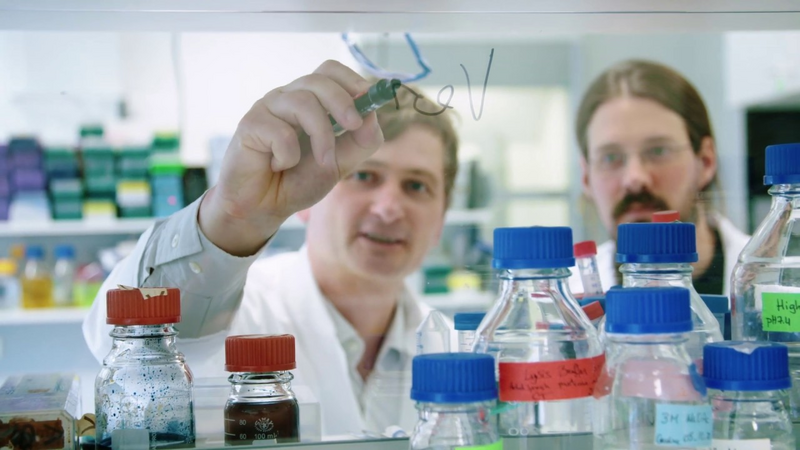
Mission
Research at the interface of RNA & Infection
Rising antimicrobial resistance, chronic infections, and (re-) emerging pathogens are among the major challenges facing humanity. RNA is increasingly understood to contribute to key regulatory and sensory processes in the cell, but the role of RNA in infection biology remains understudied.
Research at HIRI—in the city of Würzburg, Germany—aims to close this gap by combining interdisciplinary expertise with cutting-edge research infrastructure to exploit the vast potential of RNA as a diagnostic molecule, target, and drug to combat infectious disease.
- A portrait of HIRI and its managing director Prof Jörg Vogel (in German).
Our major goals are
To better understand infections at the single-cell level
To detect regulatory ribonucleic acids (RNA) in infection processes
To identify RNA-based mechanisms in viral infectivity and host defense
To harness RNA in medical diagnostics, prevention and as anti-infectives
To develop innovative application techniques
Who we are
The Helmholtz Institute for RNA-based Infection Research (HIRI) is the first institution of its kind worldwide to combine ribonucleic acid (RNA) research with infection biology.
Based on novel findings from its strong basic research program, the institute’s long-term goal is to develop innovative therapeutic approaches to better diagnose and treat human infections.
HIRI is a site of the Braunschweig Helmholtz Centre for Infection Research (HZI) in cooperation with the Julius-Maximilians-Universität Würzburg (JMU) and is located on the Würzburg Medical Campus.
What we do
At HIRI, scientists investigate ribonucleic acids (RNA) and their role in infectious diseases. RNAs are transcripts of genetic material and serve, among other things, as carriers of genetic information, but also have regulatory functions.
During an infection, the RNA molecules of a disease-causing agent interact with those of the infected cell to enable the pathogen to survive and to multiply within the host. To date, little is known about the regulatory role of RNAs in infections. This is where the research of the HIRI sets in.

Team
We look forward to your email, call, or visit.

